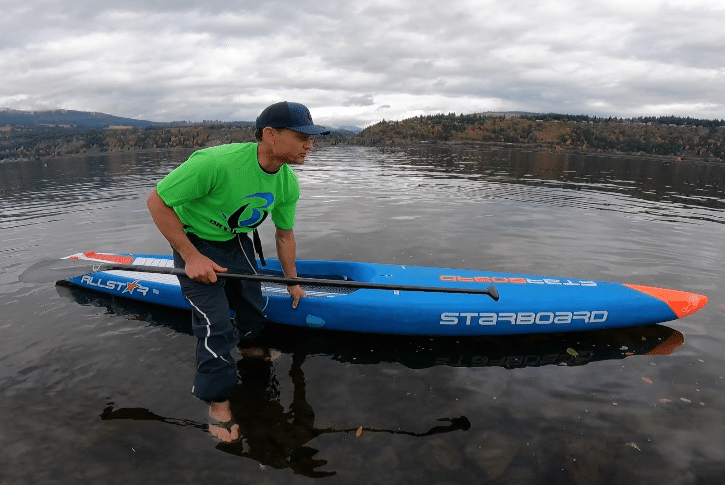Which Life Jacket is Best for Paddle Boarding?

What’s safe? What’s legal? And what PFD is best for you? From life jackets, to life belts and beyond, TJ pulls some air canister tabs in this video to reveal your ultimate flotation device for SUPing.
But before diving into PFDs, a question: What’s one of your best flotation safety devices when on the water?
Some hints: It’s not a PFD. It’s not Coast Guard approved. The law doesn’t even require you wear one. But here at Big Winds, we stock hundreds of ‘em for our rental and demo fleet to keep our customers safe on the water.
It’s a SUP leash. When it comes to your safety, a leash is a big deal. After all, one of your best sources of flotation is your board. A leash keeps it with you always. So wear one. Always.
Onto PFDs, the various types, their legalities here in Oregon, pros and cons, and which is best for you.
Usage Laws: Can be worn or stowed on your vessel, with the exception of riders 12 years or under, who must wear Class III PFDs while SUPing.
Pros: Unconditional flotation. Fall in and you float. No fumbling with pull tabs to deploy an air canister that inflates a vest that you must then position around your body for support, all while treading water. With a life jacket, buoyancy is a given at all times, and riders are hands free at all times. Also, a life jacket requires little to no maintenance.
Cons: Cumbersome. For paddling – especially over long distances – life jackets impede progressive paddle strokes. When paddlers hinge at the waist, drawing on core muscles for maximum paddle power and endurance, a life jacket gets in the way.
Best Suits: Riders 12 or under (it’s the law!), as well as anyone trepid about the water. Life jackets offer unrivaled peace of mind and safety.
Class III Inflatable Life Belt
Usage Laws: Can be worn or stowed on board by anyone 16 years or older.
Pros: It’s far more streamlined than a life jacket, and – when inflated and worn properly – it offers similar buoyancy in that riders can float in a hands free setting. The inflated jacket is worn over a rider’s head.
Cons: Compared to a life jacket, buoyancy comes only to those who pull the inflation tab, and position the inflated vest around their neck. Sounds easy, but if injured, if in big seas, if in peril, these steps are challenging, take time, and compromise rider safety. Also, all inflatable PFDs require maintenance such as periodic checks of the canister’s attachment point to the vest.
Best Suits: Riders 16 or over who want a streamlined inflatable PFD that (when inflated) can be worn.
Usage Laws: Must be worn at all times by riders 16 or older.
Pros The most streamlined belt out there. Easy to forget it’s on.
Cons: When inflated, it’s a buoyant cushion. You don’t wear it so much as lay over it like a pillow. If injured, if paddling a long ways from help, the buoyant cushion requires the most rider wherewithal to utilize. From a safety perspective, its applications are the most limited. And as aforementioned, inflatable PFDs like this one require maintenance.
Best Suits: Riders 16 or over who want the most minimalistic PFD that is in compliance with the law.
Click for our full lineup of adult, youth and children’s PFDs. And don’t forget your best source of flotation on the water, your leash! Find yours here.













